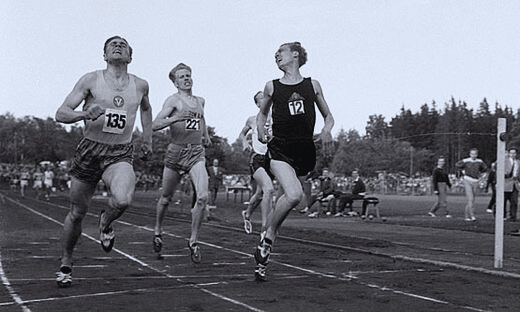The 1500-meter race, also known as the metric mile, is a thrilling middle-distance track event that demands a unique blend of speed, endurance, and tactical prowess. Athletes compete to complete approximately 3 and 3/4 laps around a standard 400-meter track, requiring both aerobic and anaerobic energy systems to excel. Mastering the 1500-meter race demands physical conditioning, race strategy, and mental toughness.
Building Endurance and Speed
Aerobic Conditioning
Aerobic endurance forms the foundation of success in the 1500-meter race. Long-distance runs, tempo runs, and interval training are crucial components of a comprehensive training program. These workouts enhance cardiovascular fitness, allowing athletes to sustain a fast pace over the entirety of the race.
Speed Development
In addition to endurance, speed is essential for competitive performance. Sprint drills, strides, and interval workouts focusing on shorter distances help athletes improve their leg turnover and develop the necessary speed to kick past competitors during critical moments of the race.
Perfecting Racing Tactics
Pacing Strategies
Effective pacing is paramount in the 1500-meter race. Athletes must find the delicate balance between conserving energy for the later stages of the race and positioning themselves strategically to respond to surges from opponents. A common tactic is the “negative split,” where athletes run the second half of the race faster than the first, capitalizing on their endurance and leaving competitors behind.
Positioning and Tactics
Strategic positioning throughout the race can make the difference between victory and defeat. Athletes must navigate the crowded field, anticipate moves from competitors, and position themselves well to execute their race plan. Maintaining optimal positioning allows athletes to conserve energy and make decisive moves when it matters most, such as during the final lap or sprint to the finish line.
Mental Preparation and Focus
Visualization and Mental Rehearsal
Mental preparation is as crucial as physical training in the 1500-meter race. Athletes utilize visualization techniques to mentally rehearse every aspect of the race, from the start to the finish. By visualizing themselves executing their race plan flawlessly and overcoming challenges with confidence, athletes cultivate a winning mindset that translates into improved performance on race day.
Focus and Resilience
Maintaining focus and resilience amidst the intensity of competition is essential for success. Athletes must block out distractions, stay present in the moment, and adapt quickly to changing race dynamics. Developing mental toughness through mindfulness practices and positive self-talk empowers athletes to overcome adversity and perform at their peak when it matters most.
FAQs
How should I structure my training regimen for the 1500-meter race?
Your training regimen should include a balance of aerobic conditioning and speed development. Incorporate long-distance runs, tempo runs, and interval training to build endurance, while also incorporating sprint drills and strides to improve speed. It’s essential to gradually increase mileage and intensity while allowing for adequate rest and recovery to prevent injuries.
What are some effective pacing strategies for the 1500-meter race?
Effective pacing strategies involve finding the right balance between conserving energy and positioning yourself strategically to respond to surges from opponents. Consider employing a “negative split” strategy, where you run the second half of the race faster than the first. This allows you to capitalize on your endurance and make decisive moves when it matters most, such as during the final lap or sprint to the finish line.
How can I improve my mental toughness for the 1500-meter race?
Improving mental toughness is crucial for success in the 1500-meter race. Practice visualization and mental rehearsal techniques to imagine yourself executing your race plan flawlessly and overcoming challenges with confidence. Additionally, cultivate a resilient mindset by staying focused, blocking out distractions, and maintaining a positive attitude, even in the face of adversity. Mindfulness practices and positive self-talk can also help enhance mental resilience.
What should I focus on during the final lap of the 1500-meter race?
During the final lap of the 1500-meter race, focus on maintaining your form, staying relaxed, and conserving energy for a strong finishing kick. Position yourself well to take advantage of any opportunities to pass competitors or make a decisive move toward the finish line. Stay mentally tough, stay present in the moment, and trust in your training and preparation. Remember to give your all in the final sprint, leaving everything on the track as you strive for the best possible finish.
Conclusion
Mastering the 1500-meter race requires a holistic approach that encompasses physical conditioning, tactical acumen, and mental fortitude. By diligently incorporating endurance and speed training, refining racing tactics, and cultivating a resilient mindset, athletes can position themselves for success on the track. With dedication, perseverance, and a relentless pursuit of excellence, the podium awaits those who dare to chase their dreams in the thrilling arena of middle-distance running.

